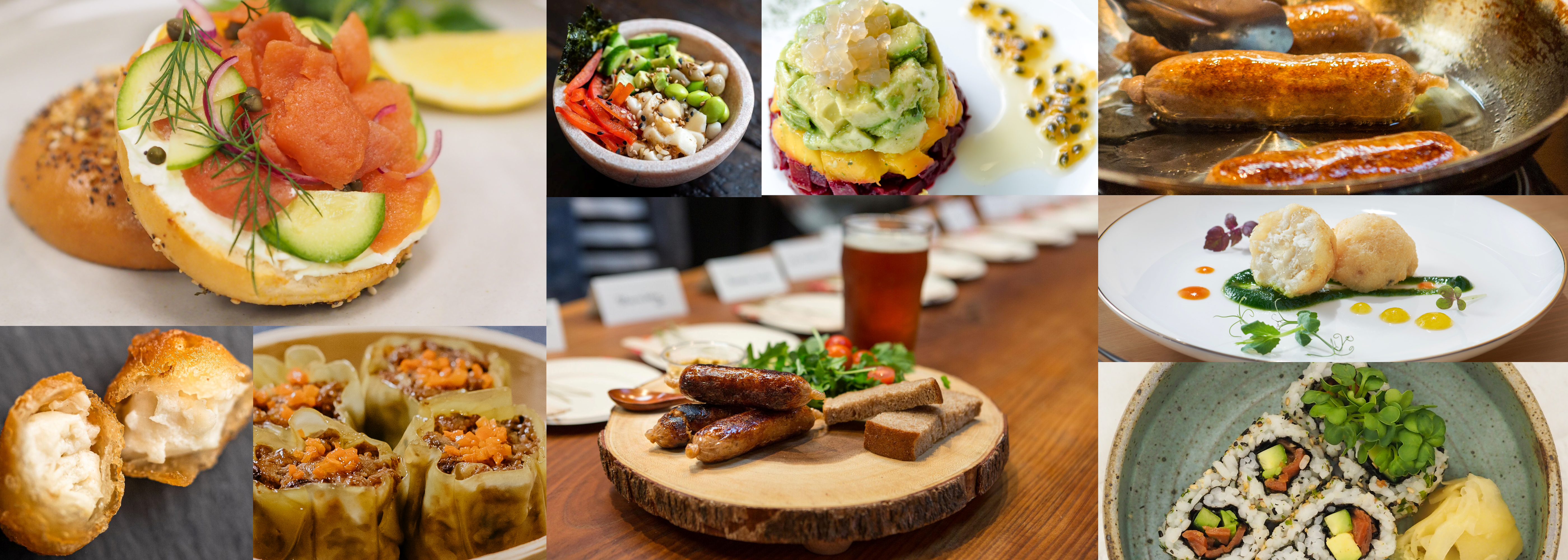Technology
Where KFC's lab-grown chicken efforts might lead QSRs
Can lab-grown or cultivated meat really be a game-changer for QSRs in the future? The scientists at a Washington, D.C.-based non-profit alternative protein advocacy organization think so.

August 18, 2020 by S.A. Whitehead — Food Editor, Net World Media Group
When KFC Russia said last month that it hoped to launch and sell lab-produced chicken nuggets, advocates of Earth-friendly protein sources were ebullient for what it could mean for the environment. To create the nuggets, KFC Russia and 3D Bioprinting Solutions use 3D printing technology, a move that Yum Brands, KFC's parent company, said could it meet the demand for both sustainable products and alternatives to traditionally derived meats.
KFC — which did not respond to QSRweb's requests for additional information — has been relatively tight-lipped about the initiative. That hasn't stopped scientists and members of the Good Food Institute — a non-profit Washington, D.C.-based alternate protein source advocacy group — from being overjoyed, however.
 |
| Zak Weston of the Good Food Institute.(Photo: Provided) |
"The significance of KFC ... doing this is that this is a chance to be in the history books if cultivated meat ends up overcoming the different scientific and other challenges that it faces," Zak Weston , the Good Food Institute's foodservice and supply chain manager, said in an interview with QSRweb.
Although Weston said we were probably years away from KFC globally selling lab-grown or cultivated chicken, it was a good sign to have such a major brand on board.
"If it's able to realize the potential that we think seems to be demonstrated by a lot of the early success we've seen in research and development, this has the potential to really transform our food system into a much more healthy, sustainable and better food system, and protein supply chain," said Weston , who recently chatted wtih QSRWeb about the process.
"It's certainly not what we expected in terms of which country and which restaurant chain would be the first, but it's a way of generating a lot of attention in addition to being important commercial and technical milestones," he said.
Read the rest of the interview below.
Q: Let's just start with the whole idea of why developing cultivated meat is even necessary for the restaurant industry or any other consumer of animal protein?
Weston : Well, you know, plant-based has been one of the most significant growth stories in foodservice over the past several years and one of the fastest growing categories. And according to the research we (GFI) have done, that's really shown that there is a sort of a latent consumer interest out there in consuming products products … that have the same sort of taste and texture and quality experience that they they have come to enjoy from animal protein, but without some of the health, sustainability and maybe animal welfare drawbacks.
So that's really what's driving a lot of the sustainability interest around plant-based products and it's the exact same motivator around cultivated meat because we're able to take the animal out of the equation because the animal is really the the weakest link in the in the protein supply chain.
 |
| Examples of cultivated meat and fish.(Photo credit: Wild Type, Avant Meats, New Age Meats, Shiok Meats, BlueNalu via Good Food Institute) |
You're able to have complete and process control. So yeah, really, really positive food safety experiences, you're able to reduce your water consumption, your land usage. … And you end up with products that are created exactly the way you want them. So, you know, animal meat is fundamentally about growing an animal, and then disassembling it. … But when you're cultivating me from the ground up, there's no reason that we have to grow, say, an entire cow. We can just grow the parts we want … and it will become just as cheap produce as other meat … over time, at a lower price point than you're currently producing animal proteins.
Q: Why is it significant that KFC is entering into this partnership with 3D Bioprinting to make cultivated chicken nuggets?
Weston: What KFC is launching that is something that will sort of go down in history. It's the first time in which this is offered commercially for sale to the public. … When you think about it, if I'm a QSR chain marketer, I'm always looking for ways to differentiate my brand. And what (KFC) is doing is one heck of a differentiator. It really sets (the brand) apart … and is a chance for them to teach history books.
Q: And for this particular chain, as we've seen, KFC is making other sources of menu protein a priority, too. So how do all those plant-based protein initiatives at the chain in Canada and elsewhere work with the cultivated meat initiative?
Weston: KFC is is really embracing alternative proteins in a big way. I think it's for a few reasons. No. 1, KFC is obviously trying to compete in a category that it sort of built and now is seeing a lot more competition in over the past few decades. …
But it's also really interesting because KFC is really, really a deeply mainstream America kind of brand -- almost an encapsulation of Americana. And particularly globally, it's a very recognizable brand and part of what's associated with that I think is American innovation and this idea that America is really a leader in a lot of different technologies and the culinary innovator and a lot of ways. That's part of what we export are known for globally.
So this could be a way for them to generate excitement around that and being in the history books, but ultimately deliver a product that has a lot of potential to not only taste amazing and — at least in the long run — be reasonably priced but also a product that consumers care about because it's a little bit healthier and a lot better for the environment.
Q: That nicely dovetails into picking up on that idea that it will take a while to get the cost down on cultivated meat in the range that a value QSR like KFC could really use. So how do you see that taking place?
Weston: So at the end of the day because right now is all this is research and in the development stages, it's very expensive on a per pound basis. But then, I suspect that that cultivated meat is going to follow a very similar model to how Tesla has entered the electric cars market and revolutionized it.
So, at first, cultivated meat is really going to be a premium product … that is not going to be able to compete on price right out of the gate. … But then, what you end up having is over time, you're able to produce it cheaper and cheaper."
Editor's Note: That process of increasing meat cultivation and decreasing costs for the product is where QSRweb will pick up this story on Thursday, in the second part of this interview all about the potential for cultivated meat in the restaurant industry.
About S.A. Whitehead
Pizza Marketplace and QSRweb editor Shelly Whitehead is a former newspaper and TV reporter with an affinity for telling stories about the people and innovative thinking behind great brands.









